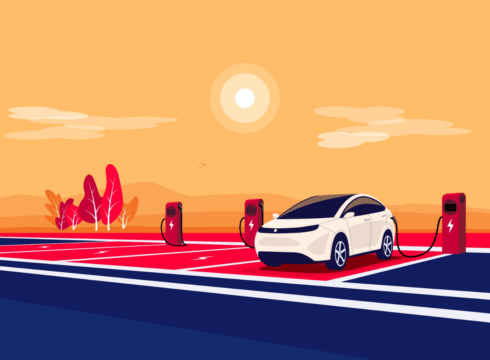The government’s recent decision to slash the FAME II subsidy comes at a critical juncture in India's EV industry, which is still in its early stages
While the government's decision to reduce FAME II subsidies aims to strike a balance between fiscal constraints and encouraging innovation, it risks stalling the growth of India's EV industry
Only with a sustained and supportive policy ecosystem can India's nascent EV boom become a reality and drive a cleaner and greener future for the country
Inc42 Daily Brief
Stay Ahead With Daily News & Analysis on India’s Tech & Startup Economy
In recent years, India’s journey towards embracing electric vehicles (EVs) has seen significant progress, fueled by rising pollution concerns, rising fuel prices and a growing demand for sustainable transportation solutions.
Grappling with the challenges posed by climate change, the Indian government launched the Faster Adoption and Manufacturing of Electric Vehicles II (FAME II) scheme in 2019, aiming to accelerate the adoption of EVs and position India as a global leader in clean and green mobility. However, the recent decision to slash the FAME II subsidy has raised concerns about the impact it may have on India’s developing EV industry.
A Step Backward For The EV Industry
The reduction in the FAME II subsidy comes at a critical juncture in India’s EV industry, which is still in its early stages. While the FAME II scheme was initially viewed as a significant boost, the abrupt reduction in subsidies sends mixed signals to the industry and undermines investor trust.
It also creates uncertainty among manufacturers, making it difficult for them to plan and execute long-term EV manufacturing strategies. With reduced financial incentives, the cost of EVs becomes less competitive, making it difficult for widespread adoption among Indian customers.
Affordability is one of the primary drivers of EVs’ success. By lowering the subsidy under FAME II, EVs become more expensive for consumers. As a price-sensitive market, India relies heavily on government subsidies to bridge the cost gap between EVs and conventional vehicles. Slashing the subsidy abruptly and unexpectedly may result in a significant drop in demand, stifling the EV market’s growth. This action may deter potential buyers from seeing EVs as a viable alternative, leading to a blow to India’s ambitious electrical mobility goals.
The Indian EV industry relies heavily on economies of scale to reduce production costs. Manufacturers invest in building robust supply chains, EV battery manufacturing facilities, and research and development to foster innovation and achieve cost efficiency. Lowering the subsidy will not only affect customer demand but also hamper manufacturers’ ability to scale up production. This may hinder domestic and international manufacturers from establishing or expanding operations in India, jeopardising India’s vision of becoming a worldwide EV manufacturing hub.
Another critical aspect for the success of any sector or industry, especially sunrise sectors like EVs, is a stable and predictable policy environment. The sudden cut in the FAME II subsidy creates an atmosphere of uncertainty that may discourage investment in the electric vehicle sector. To make informed decisions about capital allocation and resource planning, manufacturers and investors need stability and consistent policies. But frequent fluctuations in policies can lead to confusion, hamper growth and harm the electric vehicle industry’s ability to conduct business.
Need For A Comprehensive Approach
The government should put more effort into establishing a comprehensive strategy to support the expansion of the EV industry rather than cutting subsidies.
This could include a combination of measures such as increasing R&D spending, encouraging indigenous battery manufacturing, putting in place battery charging infrastructure and creating incentives for customers and manufacturers. Furthermore, facilitating collaborations between industry, research institutions, and academia can also drive innovation in the EV market.
India’s nascent EV industry holds enormous potential to promote sustainable transportation, reduce carbon emissions and generate employment. However, while the Indian government’s decision to reduce FAME II subsidies aims to strike a balance between fiscal constraints and encouraging innovation, it risks stalling the growth of India’s thriving electric vehicle industry.
The abrupt withdrawal of incentives might limit the adoption of EVs, hinder domestic manufacturing, discourage potential buyers and undermine the growth of the EV market. Therefore, a phased reduction in subsidies and a gradual transition to market-based mechanisms could have been a more prudent approach than an outright cut.
To achieve India’s ambitious electrification targets, the government must embrace a long-term vision, implement consistent regulations and establish a comprehensive framework that promotes the adoption and manufacturing of electric vehicles. Only with a sustained and supportive policy ecosystem can India’s nascent EV boom become a reality and drive a cleaner and greener future for the country.
{{#name}}{{name}}{{/name}}{{^name}}-{{/name}}
{{#description}}{{description}}...{{/description}}{{^description}}-{{/description}}
Note: We at Inc42 take our ethics very seriously. More information about it can be found here.


